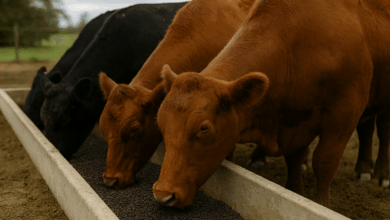Pyrolysis: The Essential Process Behind Biochar Production
How heating biomass in a low-oxygen environment is transforming agriculture and fighting climate change.

Biochar has gained significant attention in recent years due to its incredible potential to boost agricultural productivity, enhance soil health, and combat climate change. But at the heart of biochar’s production lies a fascinating, essential process known as pyrolysis. In this blog post, we’ll take an insightful look into pyrolysis, exploring how it works, why it’s crucial for biochar production, and the broader environmental implications of this process.
What is Pyrolysis?
Pyrolysis is a thermal decomposition process in which organic materials—such as wood chips, crop residues, manure, and other forms of biomass—are heated at high temperatures (typically between 300°C and 700°C) in an environment that severely restricts oxygen. Under these unique conditions, instead of combusting into ash, biomass is transformed into three primary products:
- Biochar (a carbon-rich solid)
- Bio-oil (a liquid that can be refined into fuel or chemical products)
- Syngas (a mixture of gases used for energy production)
This oxygen-limited setting ensures biomass converts into stable carbon-rich biochar rather than simply burning away.
Types of Pyrolysis and Their Role in Biochar Production
The pyrolysis process is typically categorized into three main types:
1. Slow Pyrolysis
- Temperature: 300-500°C
- Duration: Several hours
- Products: High yield of biochar, moderate amounts of bio-oil and syngas.
- Ideal for biochar production, enhancing soil fertility and promoting carbon sequestration.
2. Fast Pyrolysis
- Temperature: 450-600°C
- Duration: A few seconds to minutes
- Products: Primarily bio-oil, with smaller amounts of biochar and syngas.
- Best suited for biofuel production rather than biochar.
3. Gasification
- Temperature: 700-1000°C
- Duration: Short to moderate
- Products: Primarily syngas, minimal biochar.
- Suitable for renewable energy production.
For biochar production specifically aimed at improving soil and environmental sustainability, slow pyrolysis remains the most effective method.
The Importance of Pyrolysis in Biochar Production
1. Carbon Stability and Sequestration
Pyrolysis stabilizes carbon contained in biomass, converting it into biochar, a stable form of carbon that can remain in soil for thousands of years. By preventing biomass from decomposing or burning, pyrolysis helps reduce carbon dioxide emissions and effectively sequesters carbon underground.
2. Sustainable Waste Management
Agricultural residues, forestry by-products, and manure are often wasted or burned, releasing pollutants and greenhouse gases. Pyrolysis transforms these materials into valuable biochar, providing sustainable solutions for waste reduction.
3. Energy Generation
During pyrolysis, bio-oil and syngas byproducts can be used to produce renewable energy, making the process more economically viable and environmentally friendly.
How Pyrolysis Enhances Agricultural Sustainability
When biochar produced through pyrolysis is applied to soil, numerous benefits become evident:
- Improved Soil Health: Biochar enriches soil fertility, enhances nutrient retention, and increases soil microbial activity.
- Water Management: Biochar increases soil’s water-holding capacity, making agriculture more resilient against drought.
- Reduced Chemical Dependency: With enhanced soil fertility, farmers can reduce reliance on chemical fertilizers.
Environmental Impacts of Pyrolysis and Biochar
Pyrolysis contributes to significant environmental improvements:
- Reduction of Greenhouse Gases: By storing carbon underground, biochar helps mitigate climate change.
- Pollution Control: Biochar helps adsorb and neutralize contaminants, protecting groundwater and ecosystems.
- Circular Economy: Transforming waste streams into valuable resources aligns perfectly with sustainable development goals.
Challenges and Future Opportunities
While pyrolysis technology is promising, several challenges remain, including:
- Scaling up pyrolysis operations economically and sustainably.
- Ensuring consistent quality standards for biochar.
- Increasing awareness and adoption among agricultural communities.
However, as technology advances and global awareness grows, pyrolysis and biochar production are poised to become key solutions for environmental sustainability and climate mitigation.
Conclusion: The Pyrolysis-Biochar Connection for a Greener Future
Pyrolysis, the essential process behind biochar production, has the potential to revolutionize agriculture, waste management, and climate change strategies. By effectively turning waste biomass into valuable biochar and renewable energy, pyrolysis represents a sustainable pathway to a healthier planet.
Embracing pyrolysis technology and biochar solutions can set the stage for a more sustainable, resilient future—one that aligns agriculture, energy production, and environmental protection harmoniously.
Ready to explore pyrolysis and biochar further? Engage with sustainability initiatives, support research efforts, and advocate for sustainable agricultural practices—because every step we take towards sustainability today defines our planet’s future tomorrow.




